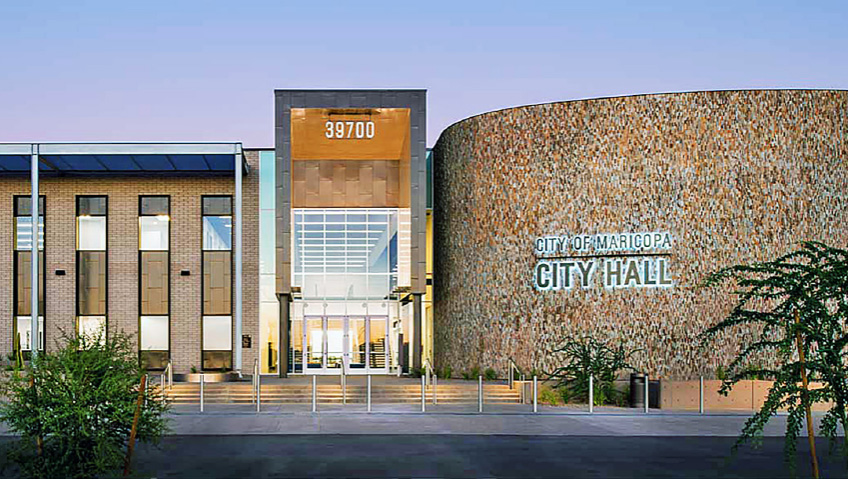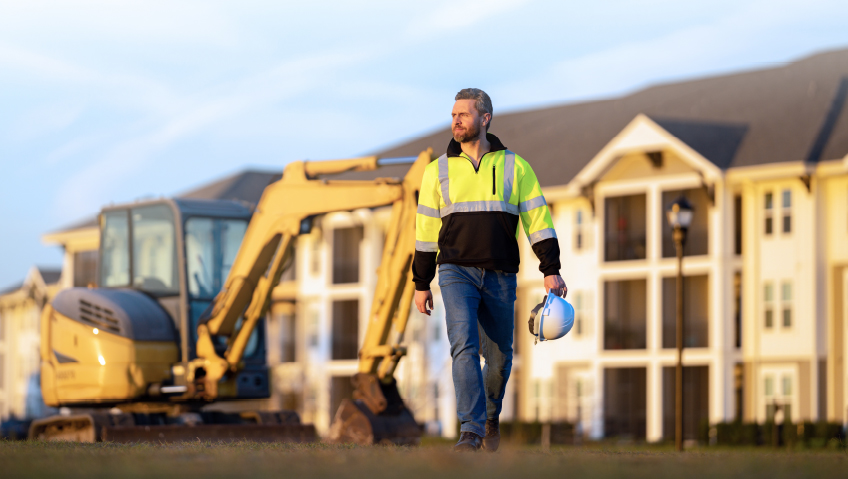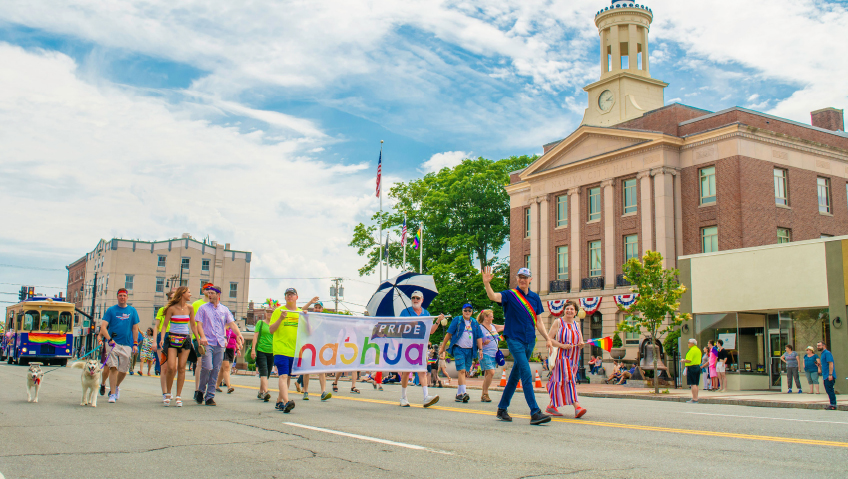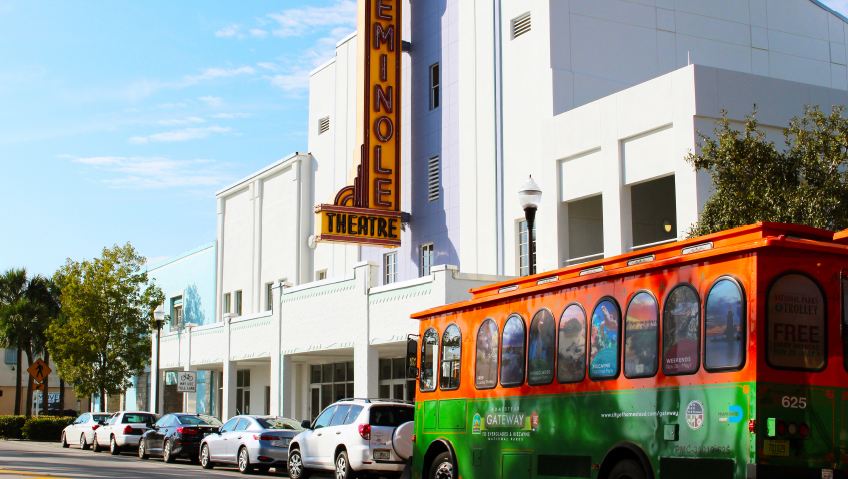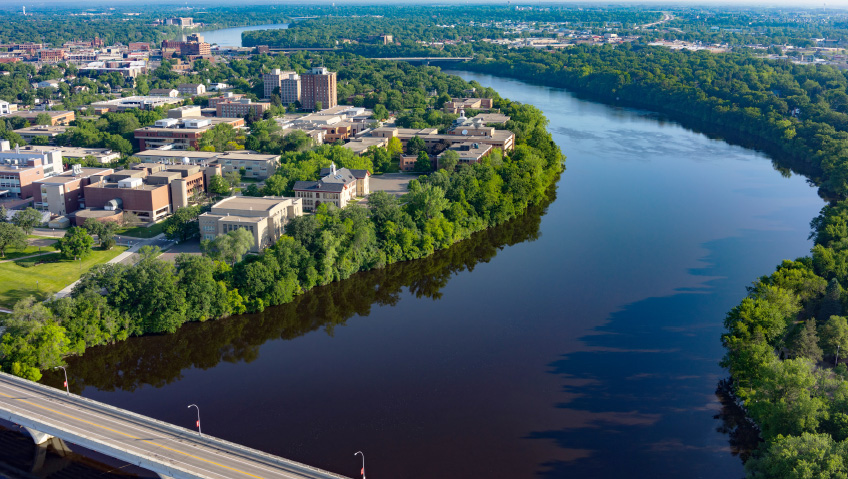Maricopa, Arizona is enjoying remarkable growth as newcomers are drawn to the community’s economic opportunity, exceptional diversity, quality of life, and affordability, which make the city an attractive alternative to nearby Phoenix. Since 2000, Maricopa’s population has skyrocketed from approximately 1,200 people to 75,000. Just two decades ago, “We were nothing but farmland,” says Christian Price, the former Maricopa mayor and current President and CEO of the Maricopa Economic Development Alliance (MEDA).
Nestled in the Sonoran desert and surrounded by majestic mountain ranges, Maricopa played a significant role in the growth of the southwest. In the mid-1800s, the water-rich outpost became an important stagecoach station and center for trade. Then, as technology advanced and times changed, Maricopa shifted its location to become a railroad junction.
Just as previous community leaders focused on growth and development—going so far as to relocate the community to take advantage of burgeoning opportunities—today’s city leaders are actively and thoughtfully working to expand the community. “We tell everyone we meet, ‘Come build a city with us,’” Price says.
MEDA works hard to support businesses that want to take advantage of all that the city has to offer. “Maricopa makes it easy for companies to locate, expand, and grow,” he points out. The organization works hand in hand with the city to provide local and regional socioeconomic data, gathers resources, and identifies potential sites for incoming businesses. The MEDA team also hosts corporate and site consultants visiting the community.
Maricopa City’s ‘VIP Portal’ provides continuous online access, allowing businesses to expedite inspections, print and apply for permits, upload plans, and track progress. During the initial application process, the city encourages co-track planning when applying for permits. There is a “collective belief in speed-to-market for business,” he says.
Maricopa is investing in itself to remain an attractive, sensible alternative to nearby Phoenix—or any other city, for that matter. The team is currently preparing greenfield land for present and future business development. The city has already been building critical municipal amenities with the support of its citizens.
“Everything is brand new,” Price says. This includes new libraries, new community centers, new recreational facilities, new dispatch and police stations, new fire stations, new transportation infrastructure, a new municipal courthouse, and much more.
One of the biggest new developments is Exceptional Healthcare’s community hospital. The first phase opened in December 2021 and includes an internal medicine hospital, a twenty-four-hour emergency room, a digital imaging suite, an in-house lab, and patient hospital beds for acute admission and overnight observation of patients. The second phase of expansion will be underway soon.
Incoming businesses will find a top-notch local workforce in Maricopa. “You have a lot of very intellectual people who are well educated,” Price notes. The median household income is $77,859, and almost 40 percent of residents hold a college degree: 11.4 percent have an associate’s degree, 16.5 percent have a bachelor’s degree, and 8.8 percent have a graduate or professional degree. An additional 27.8 percent of residents have had some college education.
Certainly, workforce development is a strong city focus. The local public school system and educational institutions, including the University of Arizona and Central Arizona College, work closely with the business community, coordinating curricula and training courses to prepare future young professionals and technology workers for local opportunities.
MEDA’s and the City’s efforts have helped create a community that has a “small-town feel with urbanized benefits,” according to Price.
Local festivals and events include the Fourth of July festival, Salsa Festival, Pumpkin Walk, Merry Copa, Night Market events, and the hot air balloon event Copa Glow. A special event celebrating the twentieth anniversary of the city’s official incorporation will take place later this year.
The community remains friendly and interactive, despite its growing numbers. “You can see people at the events; you see them in the grocery store. You can walk up to your mayor and council and speak with them.”
While mayor, he made it a point to personally respond to people who reached out on social media and attended as many local events as possible. “I tried to get to all high school graduations here,” he remembers. “It does give you a small-town feel. You can meet your neighbors and have a local block party with the entire street.”
Balancing this warm, welcoming vibe with continued growth takes effort. “It really does have a small-town feel but, at the same time, with a hyper-growing city, you are always increasing the tourism aspects [and] the schools are always growing,” Price says. “The neighborhoods are growing rapidly as well as the interest in creating industry here locally, and that’s what we here at MEDA are focused on. How do we attract the very best industries to help complement the community and keep people where they are already living, working, and playing?”
After growing the local population and amenities, there is a new area of focus. “The business sector is really what we’re after now, so that we can keep our residents here instead of commuting into the Phoenix Metro Area every day,” Price explains.
Markets that MEDA has targeted for growth include semiconductor and advanced manufacturing, automotive—specifically electric-powered and autonomous vehicles—healthcare and medical technology, information technology, agricultural technology, and agri-business.
While city leaders’ efforts have certainly boosted Maricopa’s desirability, the community was already a natural alternative to Phoenix. “We were a little farming town and had been for one hundred years or so,” he says. “Then, all of a sudden, the housing boom comes along in the 2000s, and in the housing boom, you had everybody going crazy in the Phoenix Metro Area, buying up whatever was left, and they pretty much they ran out of places. So developers began looking to the outskirts of the Phoenix area to buy cheap land where they could build new destination points, new neighborhoods, et cetera, and that’s really how we started.”
One of the key factors that attracted developers here is the supply of water—which is critical in the Southwest. “One of the things that is amazing about the City of Maricopa is we sit on Pinal County’s largest aquifer, and we have access to that groundwater,” says Price. “The City of Maricopa has a large allotment of roughly 23,000 acre-feet of water through a company called Global Water, and their Designation of Assured Water Supply (DAWS) from the state of Arizona positions them well for growth and expansion over the next hundred years.”
After being overlooked for decades, this oasis in the desert has finally been getting its due. “In the early 1900s, considering our phenomenal history with the railroad as a center for commerce and trade in central Arizona, things changed overnight and we transitioned into a sleepy little farming community—until the modern day developers realized what they had here. As the Phoenix Metro Area was filling up, they basically said, ‘this place called Maricopa is the next frontier.’ So that’s really what Maricopa has become, the next frontier of progress and growth. In the early 2000s, we started off as a hyper-growing suburb focused on housing, but long-term that isn’t sustainable without industry and commercial businesses. You can’t just drive into a suburb and have no place to go buy a gallon of milk, to visit a restaurant, to have businesses to frequent, or to have some sort of tourism.”
So the newly incorporated City of Maricopa and its elected city council members recognized the need “to change our direction,” Price says. “We needed to control our future and enhance our quality of life. We needed to start planning things out so that we didn’t just become a suburb that filled with a maximum capacity of houses and then died under its own weight. We needed to become self-sustaining, self-contained, and ultimately become a regional industrial and commercial player.”
Today this vision includes several planned developments to support incoming markets that will employ residents. An S3 Biotech medical and innovation campus is currently underway that will include the city’s second hospital, medical office buildings, a 136-unit multifamily residential complex, and a hotel. Other anticipated projects for the near future include a business incubator, expanded retail developments, single-family housing, and more.
Recreational and tourism opportunities will also be expanding. Maricopa’s Adventure Corridor—a stretch along Route 238 home to a number of adventurous activities—is adding a new facility. The 74-acre Phoenix Surf waterpark will feature onsite hospitality, retail, dining, and an outdoor entertainment center. Construction of this long-anticipated fun in the sun is expected in late 2023.
Maricopa’s Adventure Corridor already boasts the champion golf course Ak-Chin Southern Dunes Golf Club; APEX Motor Club, a private motorsports club where participants can drive up to 160 miles per hour on the club’s track; Arizona Soaring, a professional glider training and flight site; and the skydiving facility Skydive Phoenix.
Rich with opportunity, high quality of life, educated residents, and a government committed to economic development, Maricopa has earned its place as one of the nation’s fastest-growing cities. With the community eager to continue its path of successful growth, the sky’s the limit for the future of this once-forgotten outpost, now transformed into one of the Southwest’s most sought-after locations.

